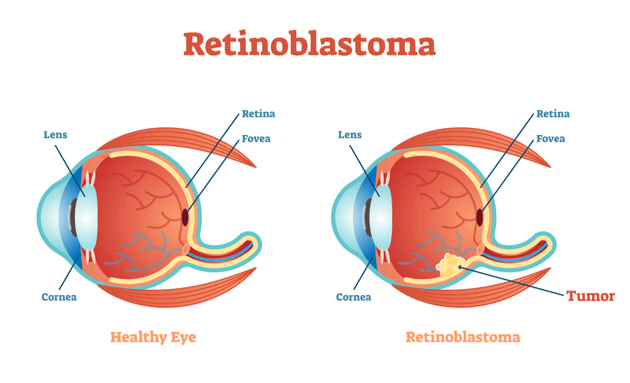Eye Cancer: Signs, Symptoms and Causes Information

Eye cancer is a rare occurrence in India, making up for about 0.3-0.4% of all cancers. 70-80% of all eye cancers in India are seen in adults.
What is Eye Cancer in Adults and Children?

Eye cancer generally affects the outer part of your eyes, like the eyelid. Intraocular cancer starts inside the eyeball. The most common intraocular eye cancers in adults are Intraocular Melanoma and Intraocular Lymphoma. The most common type of eye cancer in children is Retinoblastoma which begins in the cells of your child’s retina.
Based on the origin of the cancer cells, treatment will be suggested by your medical expert. Like all other cancers, eye cancer also, if detected at an early stage, can be treated.
What Are The Types of Intraocular Eye Cancer?
On the basis of the origin of the cancer cells, eye cancer can be classified into primary and secondary. Primary intraocular cancer develops within the eye itself. The two most diagnosed primary intraocular cancer are Intraocular Melanoma in adults and Retinoblastoma in children. Secondary intraocular cancer or metastatic cancer stems from other parts of the body and gradually affects the eyes. It can arise from cancers of lung cancer and breasts.
What Are the Causes of Eye Cancer?

Although the exact reason for eye cancer has not yet been established, studies indicate that some secondary eye cancers can stem from other forms of cancer. However, there are certain risk factors that could be responsible for the development of cancerous cells in and around your eyes.
- Eye Colour: People with light-coloured irises are more prone to developing uveal melanoma (cancer of the iris) than people with dark-coloured eyes.
- Age and Gender: Eye Cancer is more common in men than in women, and although it can develop at any age, your risk increases with age.
- Inherited Medical Conditions: Conditions like dysplastic nevus syndrome (multiple inherited melanomas), oculodermal melanocytosis or nevus of Ota (abnormal brown spots on the uvea, a pigment layering your iris), or BAP1 cancer syndrome are known risk factors for eye cancer.
- Moles: Different types of moles (nevi) in the eye or on the skin have been associated with an increased risk of uveal eye melanoma.
Other risk factors may include excessive exposure to the sun, radiation exposure, and family history of cancer.
What Are The Signs And Symptoms of Eye Cancer?

Eye cancer generally does not show symptoms in the beginning and may go unnoticed. However, if you experience any of the below signs and symptoms, consult your ophthalmologist immediately:
- Eye floaters or eye flashes
- Blurred vision, haloes, and shadows around images, especially of bright light
- A dark mole on the white part of the eye that increases in size and gets “angry” looking blood vessels around it, or bleeds
- A decrease in vision accompanied by pain
- Bulging of one eye or both (proptosis)
- A lump or tumour on your eyelid or in your eye that’s increasing in size, getting blood vessels
- Change in colour of the iris
Signs and symptoms to watch out for in children:
- White colour in the centre of the eye
- Suddenly, the eyes appear to be looking in different directions
- Eye redness and swelling
- Excessive tearing
3 Eye Cancer Facts You Should Know About

- There are multiple treatment options for eye cancer via various methods. Some of the common procedures employed are laser therapy, limited resection, intravenous chemotherapy, and radiation therapy.
- Eye Cancer is the only life-threatening ocular disease with a low survival rate. Fortunately, 80% of ocular cancer cases in India are cured if the disease is detected in its early stage.
- The most common causes of eye cancer are occupational hazards. We advise anyone working in a chemical plant or welding facility to use protective sunglasses.
Eating a vitamin-rich diet and wearing UV-blocking sunglasses that wrap around the eyes in a protective manner are other preventive steps you can take to stay safe from eye cancer.


